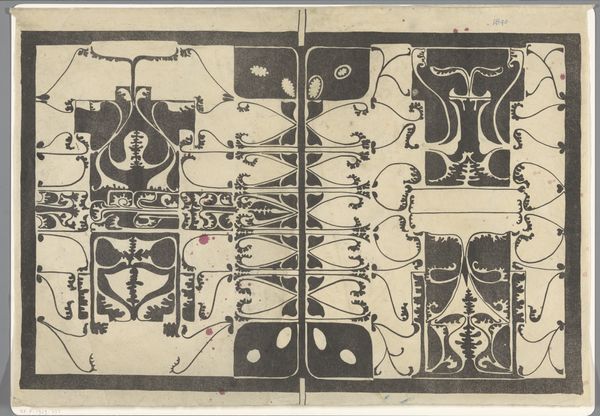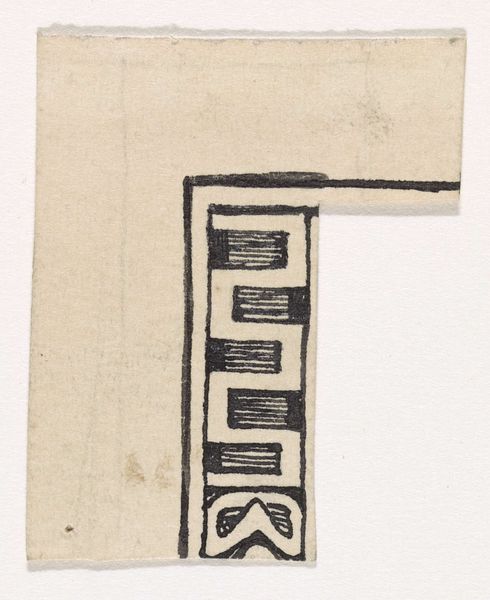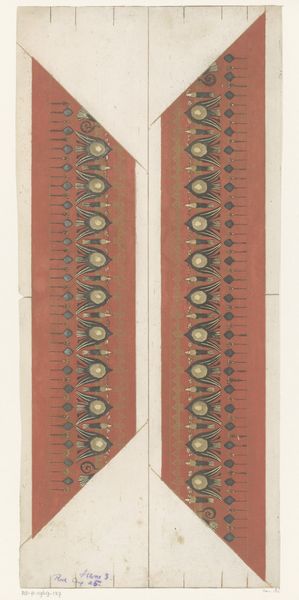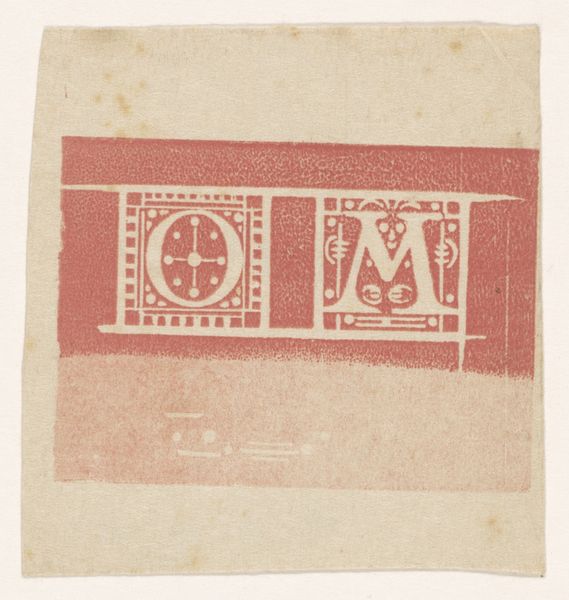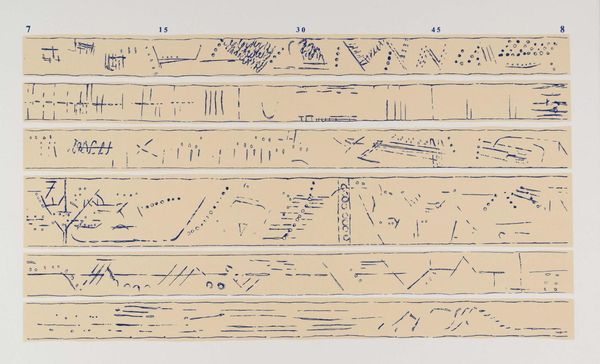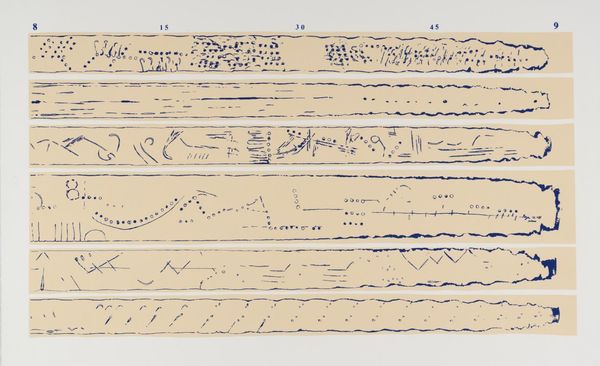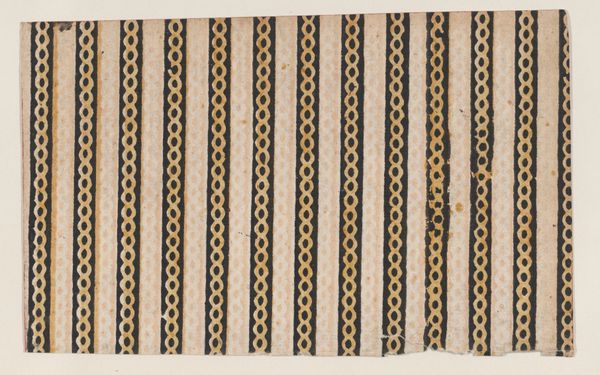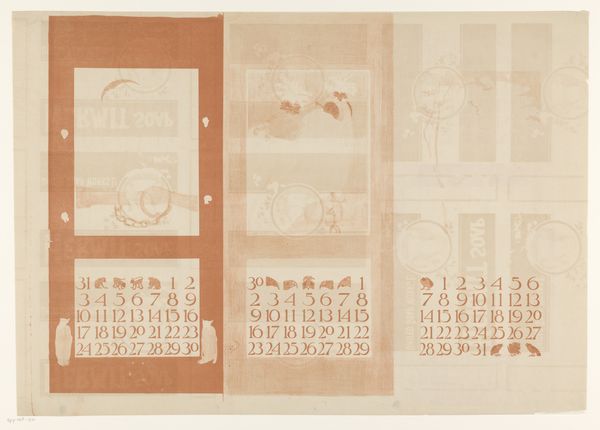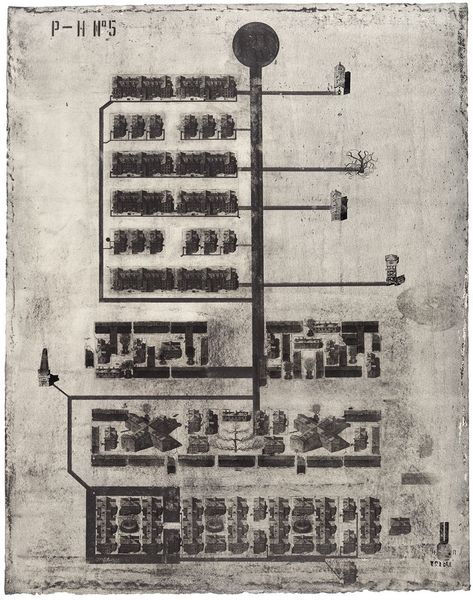
graphic-art, ornament, print
#
graphic-art
#
ornament
#
art-nouveau
# print
#
geometric
#
decorative-art
Dimensions: height 253 mm, width 63 mm
Copyright: Rijks Museum: Open Domain
Curator: Up next we have “Ornament met bladeren”, or “Ornament with leaves”, a print by Bernard Willem Wierink dating back to around 1910. You can find this graphic artwork here at the Rijksmuseum. Editor: It has a kind of rhythmic quality to it. The repeated motifs feel almost like musical notes marching across a page. There's a rigid symmetry there that hints at something deeper, perhaps some subconscious exploration of nature's patterns through a controlled geometric lens. Curator: Indeed. During the Art Nouveau period, it was quite common for artists like Wierink to find inspiration from the natural world. Art Nouveau, with its embrace of organic forms, often acted as a form of cultural defiance against rapid industrialization and the ugliness it created in urban centers. Prints such as this offered accessible beauty. Editor: What is striking about the repeated leaf symbol is that, it only abstractly alludes to nature. This visual compression is interesting. We have leaves which mutate into abstract crosses, creating a pattern that is then strictly controlled within these bands of dark ink. It suggests this yearning for nature which is then thoroughly controlled by an almost mathematical order. Curator: That’s a keen observation. The stylization and geometric interpretation seen here is also symptomatic of that early 20th-century sentiment, striving for ways of finding beauty without replicating reality too closely. There's also the consideration of what these prints were used for, mass-produced as they were. What was its societal impact? Editor: You're right; it could decorate everything from wallpaper to book covers. Considering how widely this kind of symbol proliferated, it would subconsciously reinforce the natural and spiritual importance of foliage and how the public was perceiving it, while maintaining this controlled composition. Did that influence architecture or the overall cultural views toward foliage? Curator: I suspect these patterns in ornament absolutely had a bidirectional influence on the design sensibilities of the era, seeping into all parts of material culture. A print like this really shows you how connected our aesthetics and values were, even at the mass production level. Editor: Absolutely. What a reminder that design itself can be a mirror and a quiet engine of our cultural obsessions.
Comments
No comments
Be the first to comment and join the conversation on the ultimate creative platform.
